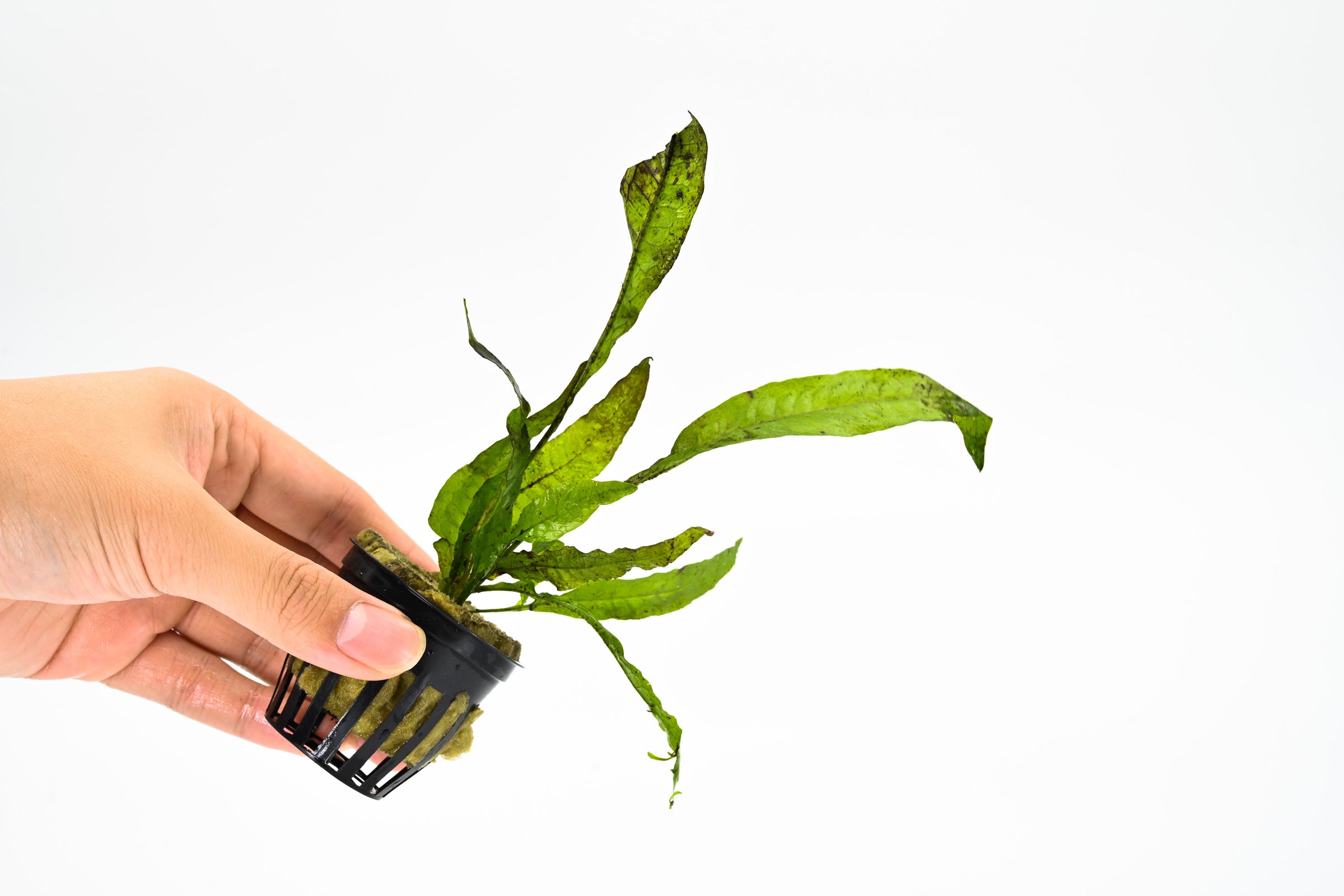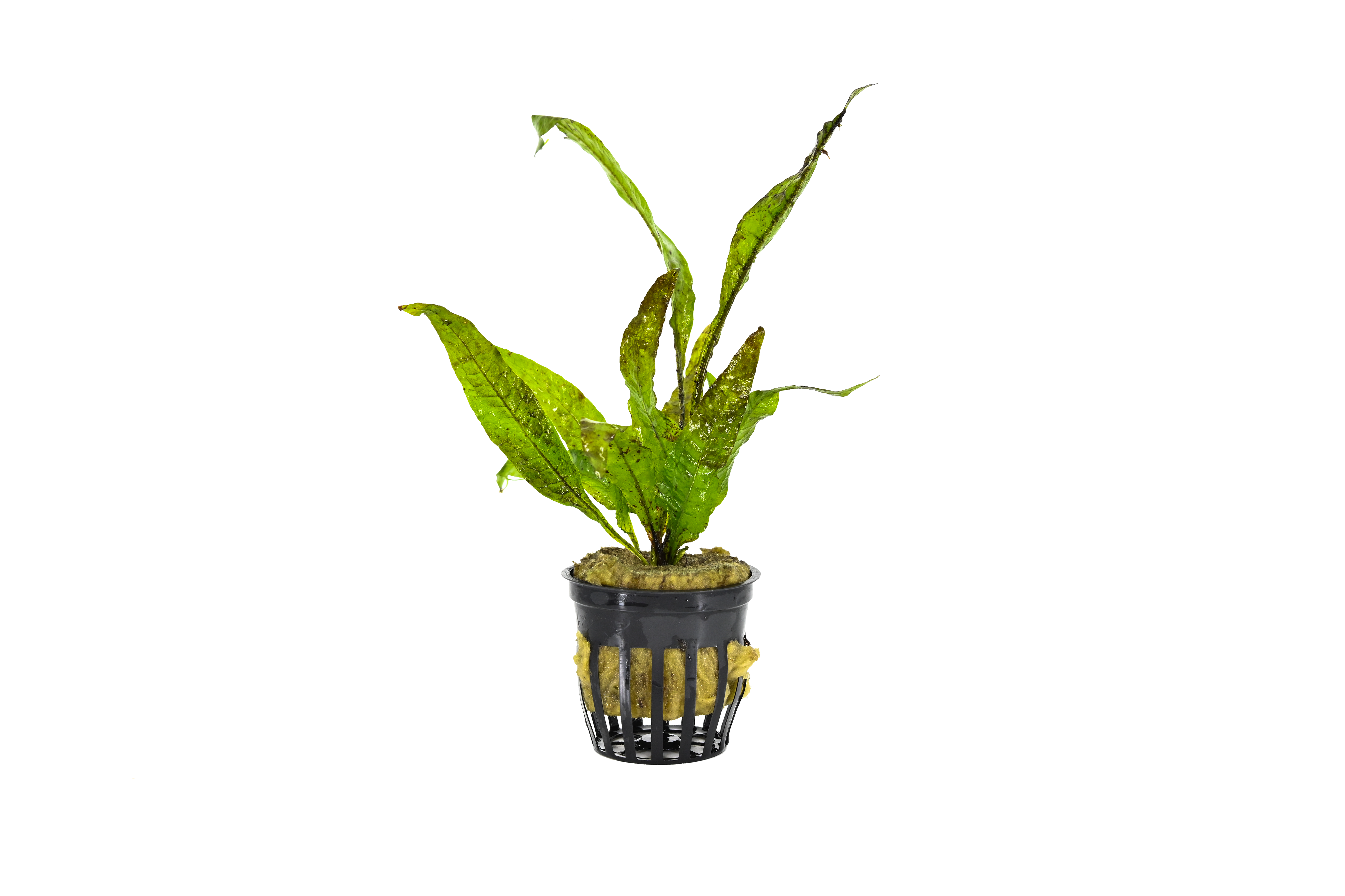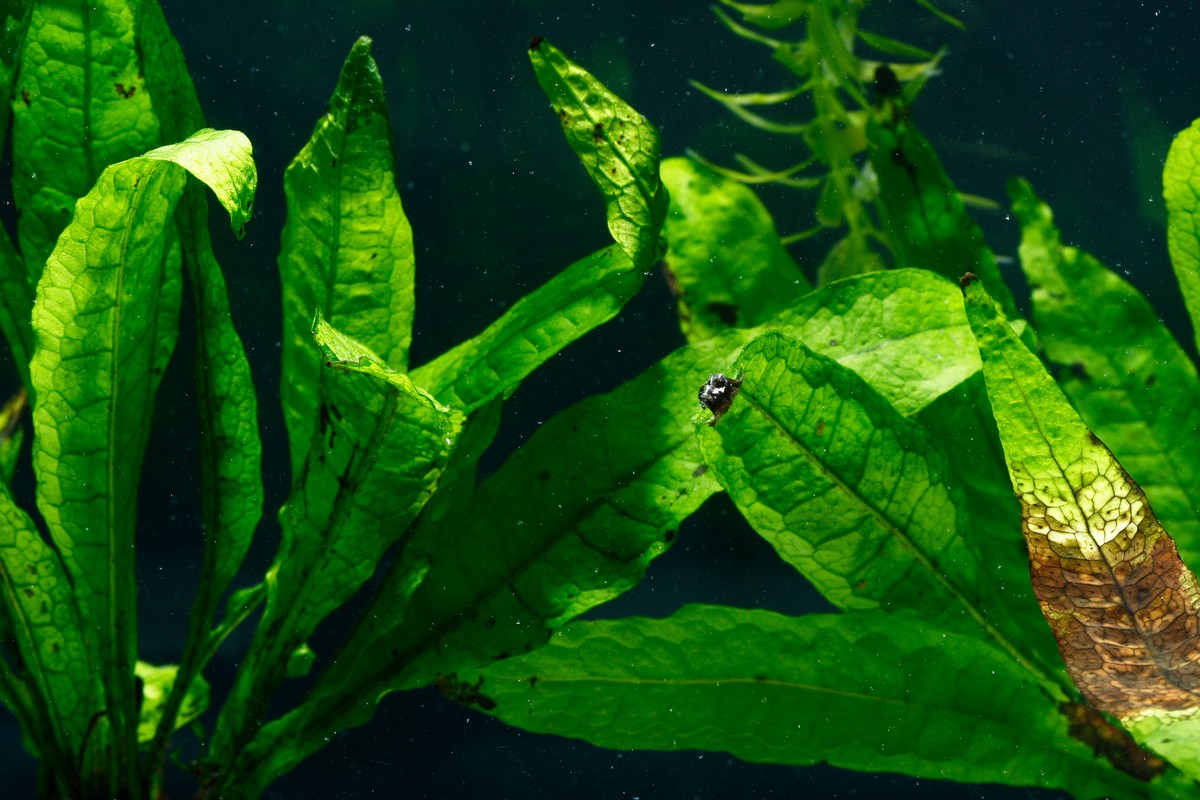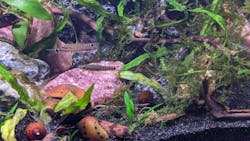
Fern Plants


Ferns, such as the Java Fern Plant, Japanese Fern Plant, and Fern Plant Red, are a popular choice among aquarists for their delicate, lacy leaves and hardy nature. These aquatic plants thrive in a variety of tank setups, adding an attractive, natural touch to any aquarium. Known for their slow-growing habit, ferns bring a sense of stability and maturity to your tank, while being easy to care for and adapting well to diverse lighting and water conditions.
In addition to their aesthetic appeal, ferns offer multiple benefits for your aquatic ecosystem. They absorb excess nutrients from the water, reducing the risk of algae blooms, and provide a comfortable resting and hiding place for fish. For a unique and creative setup, consider incorporating a fern plant hanging style to add visual interest and maximize space. Whether you choose a Java Fern Plant, Japanese Fern Plant, or the vibrant Fern Plant Red, these versatile plants can create a healthy and dynamic habitat for your aquatic pets to thrive.
At Splashy Fish tropical fish store, our Fern plants for sale and other aquarium plants for sale are cared for in an ideal environment and packed with love and care. Visit us to buy them online or at our aquarium store in Virginia for more betta fish for sale, freshwater fish for sale, freshwater shrimp for sale, and aquarium supplies.
Fern Plants Frequently Asked Questions (FAQs)
Are Java Ferns easy to care for?
Java Fern is a low-maintenance and resilient plant, making it a top choice for beginner aquarists and a dependable favorite for seasoned fish keepers. Its adaptability and ease of care mean there are virtually no downsides to adding Java Fern to your aquascape.
Do bettas like Java Fern?
Betta fish are naturally drawn to Java Ferns, as these plants offer the perfect environment for swimming between their leaves and provide excellent cover to help bettas feel secure and street-free.
How to plant ferns in an aquarium?
The best way to plant Java Fern in your aquarium is by attaching it to driftwood using a gel-based superglue. Gel glue is ideal as it provides better grip and volume, making it easier to secure the plant’s roots to the surface. Since Java Fern is a rhizome plant, it thrives on hardscapes like wood and rocks rather than being buried in aquarium substrate.
The Perfect Addition to Your Aquarium: Exploring the Beauty and Benefits of Fern Plants
Looking to add a touch of elegance and natural aquascaping beauty to your freshwater aquarium? Look no further than fern plants. These lush green wonders are the perfect addition to any underwater landscapes. Not only do they enhance the aesthetic appeal of your aquarium, but they also provide numerous benefits for your aquatic friends. Fern plants are known for their ability to oxygenate the water, creating a healthier environment for live freshwater fish and other aquatic creatures. Their dense foliage acts as a natural filter, removing harmful toxins and purifying the water. This can help reduce the need for frequent water changes and keep your aquarium cleaner for longer. In addition to their practical benefits, fern plants also offer a sense of tranquility and serenity. Watching their delicate leaves sway gently in the water can be incredibly calming and therapeutic, creating a peaceful atmosphere in your home or office. With a wide variety of fern plants to choose from, you can easily find the perfect species to suit the requirement of your vibrant aquarium. From the vibrant colors of Java Fern to the feathery fronds of Water Sprite, these plants add a touch of elegance and natural beauty to any underwater garden. Discover the beauty and benefits of fern plants and take your aquarium to the next level.
The Beauty of Fern Plants
Fern plants add a unique elegance to freshwater aquariums, with fronds that create soft, feathery textures and lush layers of green. Ferns like Water Sprite and Java Fern come in different shapes and sizes, making it easy to find a fern for aquarium tank setups of any style. Their beauty lies in their diversity; whether you want the delicate look of aquatic ferns or the vibrant hues of java fern type, there is a fern plant aquarium species to match any aesthetic.
Exploring types of ferns pictures can give you a visual sense of the variety available. Ferns that grow in water like Java Fern are highly adaptable, thriving in a range of light and water conditions, which makes them accessible even for aquarium beginners. From small desktop tanks to expansive aquascapes, fern plant aquariums add depth and natural beauty that transforms your aquarium into a calming, picturesque space.
Benefits of Having Fern Plants in Your Aquarium
Fern plants offer numerous ecological benefits that go beyond just adding beauty:
- Oxygenation: Ferns help maintain oxygen levels in the aquarium tank, creating a healthier environment for fish, freshwater invertebrates, shrimp and snails. This natural oxygenation supports the well-being of your pet fish and relieves stress.
- Natural Filtration: With their dense foliage, aquarium fern plants act as natural aquarium filters by absorbing excess the need for frequent water changes, making maintenance easier and promoting stable water quality.
- Shelter and Habitat: Ferns provide hiding spots and shelter, which can help reduce stress in freshwater snails, fish, shrimp. These aquarium plants offer safe spaces, mimicking natural habitats and providing peace and security for more sensitive species.
- Therapeutic Effect: Watching fern plants in an aquarium can be incredibly calming, creating a peaceful and serene atmosphere in any room. The gentle motion of the aquarium plant fern leaves is soothing, adding a therapeutic quality to your aquarium’s appeal.
Types of Fern Plants Suitable for Freshwater Aquariums
If you’re looking to add fern plants to your aquarium, there are several excellent options, each with unique features and benefits. These plants not only enhance the aesthetic appeal of your aquascaping tank but also contribute to a healthy environment for your aquatic life. Here are some of the best aquarium ferns that can thrive in a variety of water conditions:
- Java Fern (Microsorum pteropus): Available in various types, such as Narrow Leaf Java Fern, Windelov Java Fern, and Trident Java Fern. This plant is a top choice for aquarists due to its hardiness and versatility. Java Fern grows well when attached to aquarium rocks or driftwood, making it an easy addition to any aquascape. Its tolerance to a wide range of water conditions makes it an excellent choice for beginners and experts alike.
- Water Sprite (Ceratopteris thalictroides): Known for its fine, feathery fronds, Water Sprite can be grown as a floating plant or anchored in the aquarium substrate. Its fast growth provides excellent cover for small fish and freshwater shrimp, creating a natural habitat.
- Bolbitis (Bolbitis heudelotii): Often called African Water Fern, Bolbitis has dark green, serrated leaves that bring a dramatic touch to freshwater aquariums. This plant prefers low to moderate light and grows well when attached to aquarium rock and stones or driftwood.
- Hornwort (Ceratophyllum demersum): Although technically not a true fern, Hornwort resembles a fern with its thin, needle-like leaves. It’s versatile and provides a hiding place for fish and a surface for beneficial bacteria.
- Microsorum ‘Petite’: A dwarf version of the Java Fern, Microsorum ‘Petite’ is perfect for small aquariums or as a foreground plant in larger setups. Its compact size and vibrant color make it a versatile choice for freshwater aquascaping.
- Weeping Moss Fern (Vesicularia ferriei): Known for its cascading, weeping growth pattern, this plant adds depth and texture to freshwater aquariums. It is often used to create lush, natural-looking “walls” or “trees” in aquascapes.
Each of these ferns that grow in water adds its unique beauty to an aquarium tank. Browsing types of ferns pictures can help you decide which plants will best fit the look and feel of your tank setup.
Java Fern Plant: A Top Choice for Freshwater Aquariums
Java fern is one of the most popular and reliable aquarium fern plants. It’s a hardy, low-maintenance plant that can adapt to a wide range of tank conditions, making it perfect for aquascaping beginners and experts alike. Java fern thrives in low to moderate light and grows best when its roots are attached to aquarium rocks, driftwood, or other natural decorations, rather than buried in the aquarium substrate.
Java fern is known for its attractive green leaves, which come in various shapes and sizes. Java fern types like Trident, Windelov, and Narrow Leaf Java Fern allow aquarists to experiment with different textures and styles within the same species. This flexibility makes Java Fern an ideal choice for diverse aquascapes, adding visual depth while serving as a shelter for small freshwater fish and shrimp.
In addition to its aesthetic value, Java Fern provides ecological benefits by contributing to water oxygenation and offering surfaces for beneficial bacteria. The fern plant aquarium setup not only looks beautiful but also promotes a healthier environment for aquatic life.
Choosing the right location for your fern plants
Selecting the optimal location for fern plants in your aquarium tank is fundamental to their health and aesthetic contribution. Consider the following:
- Avoid High-Flow Areas: Fern plants, particularly delicate species like Java Fern and Water Sprite, thrive in areas with gentle water movement. Strong currents can damage their fronds, causing stress and hindering growth. Place them in calmer sections of the tank, such as near rocks, driftwood, or in areas shielded by other aquarium plants.
- Focal Point Placement: Use fern plants as visual highlights. Their unique textures and vibrant greens make them perfect for drawing attention to specific parts of the aquarium tank. For instance, anchoring a Java Fern to a prominent piece of driftwood or rock can create a striking centerpiece.
- Layering for Depth: To achieve a natural-inspired aquascaping, position ferns at different heights. Attach them to elevated surfaces like tall rocks or create a cascading effect by combining larger ferns at the back with smaller ones in the foreground.
- Compatibility with Other Plants: Pair fern plants with low-maintenance, shade-tolerant species like Anubias or moss plants. This not only enhances the overall appearance but also creates a supportive environment for all plant types in the aquarium tank.
By strategically placing your fern plants, you’ll enhance their growth while elevating the visual appeal and harmony of your aquarium.
Soil and watering requirements for fern plants
While fern plants in aquariums do not require traditional soil, understanding their specific needs for anchoring and water quality is essential:
- Substrate-Free Growth: Most fern species, such as Java Fern and Bolbitis, should not have their rhizomes buried in the aquarium substrate. Instead, attach them to hard surfaces like aquarium rocks or driftwood using aquarium-safe glue or thread. Burying the rhizome can lead to rot, which stunts growth and may kill the plant.
- Water Quality Parameters: Use water conditioners to maintain stable water conditions with a pH range of 6.0 - 7.5 and soft to moderately hard water. Ferns thrive in water with minimal fluctuations, so regular water changes (10 - 20% weekly) are recommended to replenish essential nutrients and maintain clarity.
- Nutrient Absorption: Unlike rooted plants, aquatic ferns absorb nutrients directly from the water through their leaves. Adding liquid fertilisers containing iron, potassium, and trace minerals can support healthy growth, especially in low-nutrient tanks.
- Temperature Preferences: Most aquarium ferns grow best in water temperatures between 22°C and 28°C (72°F to 82°F). Avoid exposing them to extreme fluctuations, as this can cause stress and discoloration.
Proper water management and attention to their unique anchoring needs ensure your fern plants remain healthy and vibrant.
Proper aquarium lighting for fern plants
Lighting plays a crucial role in the growth and appearance of fern plants. Here’s how to provide the right lighting environment:
- Low to Moderate Intensity: Fern plants such as Java Fern, Water Sprite, and Bolbitis prefer subdued lighting. Excessively bright light can encourage algae growth on their leaves and potentially damage their delicate fronds.
- Lighting Duration: Maintain a consistent light cycle of 6-8 hours per day. Too much light can stress the plants and lead to nutrient imbalances, while too little light can slow growth and reduce their lush appearance. Using a timer ensures consistency and eliminates guesswork.
- Shaded Areas: For aquarium tanks with high-intensity lighting systems, consider placing ferns in naturally shaded areas, such as beneath taller plants or decorations. This mimics their natural habitat and reduces the risk of light-induced stress.
- Spectrum Requirements: Use full-spectrum aquarium lights with a color temperature of 5,000 - 7,000 Kelvin to replicate natural daylight. These lights enhance the green hues of fern plants and support photosynthesis effectively.
By providing the appropriate light conditions, you’ll help your fern plants flourish while preventing common issues like algae overgrowth.
Fertilizing and repotting fern plants
Regular fertilization and careful repotting practices, combined with selecting the right substrate, ensure long-term health and vibrancy for your aquarium ferns:
- Fertilization Needs: Fern plants benefit from nutrient-rich water. Apply liquid fertilizers weekly that include iron, potassium, and micronutrients essential for plant growth. These nutrients are absorbed directly through the leaves and rhizomes, making them ideal for ferns in aquariums without soil. For low-tech tanks or aquariums with limited nutrient availability, root tabs can be added near the anchoring points to provide an additional nutrient boost. While root tabs are not strictly necessary for rhizome-based plants like ferns, they can be beneficial if other rooted plants share the tank.
- Avoid Over-Fertilization: While plant fertilisers are beneficial, overusing them can lead to algae blooms and other water quality issues. Start with low doses and closely monitor your plants’ growth. Adjust the aquarium fertiliser quantity based on the plant’s response to avoid overloading the tank with nutrients.
- Aquarium Substrate Consideration: Solid,Gravel, and Sand
The substrate plays an important role in the overall health of your aquarium and the growth of your fern plants. Although ferns do not require soil or substrate to grow, understanding the substrate type can enhance the overall environment:
- Aquarium Gravel is a popular choice for aquariums due to its ability to anchor decorations and allow water flow around plant roots. While ferns like Java Fern and Bolbitis do not root into the aquarium substrate, you can use gravel to stabilize rocks, driftwoods, or other anchoring surfaces to which the ferns are attached. Aquarium gravel also supports beneficial bacteria growth, aiding in biological filtration.
- Aquarium Sand: Sand provides a smooth, natural aesthetic but lacks the water flow benefits of gravel. It works well in aquariums designed to mimic riverbeds or calm water environments. While ferns cannot grow directly in sand, their rhizomes can rest above it. Sand is also ideal for tanks with bottom-dwelling fish that enjoy sifting through the substrate, such as Corydoras or loaches.
- Solid Substrate or Bare Bottom: Some aquarists prefer bare-bottom tanks or use solid surfaces like slate or flat stones. These setups are excellent for ferns as they prevent rhizome burial, reducing the risk of rot. Fern can be attached to these surfaces using aquarium-safe glue or fishing line. Over time, the plant will naturally anchor itself.
- Repotting and Reanchoring: As fern grow, they may outgrow their initial placement or require repositioning to prevent overcrowding. Gently detach the plant from its current anchor and reattach it to a larger rock or piece of driftwood using aquarium-safe glue or fishing line. Avoiding damaging the rhizome during this process.
- Pruning for Health: Regularly trim dead or yellowing leaves to encourage new growth. Removing these leaves prevents the plant from expending energy on damaged areas and helps maintain a clean, healthy appearance.
- Long-Term Growth Support: Monitor the plant’s growth patterns and adjust its placement or care routine as needed. For example, slow-growing species like Bolbitis may require slightly more time to establish themselves, while faster growers like Water Sprite might need more frequent trimming.
By combining proper aquarium fertilization, substrate selection, repotting, and pruning, your fern plants will thrive. Whether you opt for gravel, sand, or a bare-bottom setup, these practices ensure a lush, vibrant aquarium environment that supports both the aquatic plants.
Common Issues and Troubleshooting Tips for Fern Plants in Aquariums
Even though aquatic ferns are hardy, they can still face challenges in an aquarium setting. Here are some common issues and care guide tips for Fern plants:
- Algae Growth on Leaves: Excessive light or high nutrient levels can lead to algae covering the leaves. To control algae, reduce light exposure or introduce algae-eating fish or shrimp. Regular trimming of algae-affected leaves can also help keep your ferns clean.
- Yellowing or Browning Leaves: This may be a sign of nutrient deficiency, especially if the planted tank lacks essential trace elements. Adding a small dose of liquid fertilizer can help restore color and health. Be sure to monitor for any signs of over-fertilizations to also get rid of algae in your aquarium tank.
- Rhizome Rot: If the fern is buried in the aquarium substrate, the rhizome may begin to rot. Make sure the rhizome is above the substrate and receives proper water flow. Anchor it to a rock or driftwood instead to avoid rot and promote healthy root growth.
- Slow Growth: Some aquarium fern plants naturally grow slowly. However, if growth seems stunted, try adjusting light levels or adding trace minerals. Ferns generally don’t require high-intensity lighting, so find a balance that encourages steady growth without risking algae.
By staying mindful of these potential issues and using simple troubleshooting techniques, you can keep your fern plant aquarium looking lush and healthy.
DIY Projects and Creative Aquascaping Ideas for Incorporating Fern Plants in Aquarium Setups
Adding aquarium ferns to your tank opens up many creative possibilities to design a unique aquascape. Here are some DIY aquascaping ideas to incorporate fern plants in visually stunning and functional ways:
- Fern Walls: Create a lush green backdrop by using a mesh wall covered with aquarium ferns. Use aquarium-safe glue to attach java fern types or water fern to the mesh, which can be secured to the back or side of your tank. This living wall adds depth and natural texture while providing extra hiding sports for fish.
- Driftwood and Rock Accents: Ferns that grow in water like Java fern can be attached to driftwood or rocks for a natural look. Secure the plant’s rhizome to these hardscapes using fishing line or aquarium-safe glue. Over time, the fern will anchor itself and create a cohesive, natural appearance that integrates beautifully into the overall aquascape.
- Floating Islands: For a unique twist, consider creating a floating fern island with water fern or other floating aquatic ferns. Simply attach the ferns to lightweight décor that can float at the surface. This approach adds layers to your tank while giving smaller fish a place to hide near the water’s surface.
- Fern Tree: Craft a mini tree by attaching aquarium fern plant species to branching driftwood. Secure multiple fronds along the branches, giving the appearance of a tree with lush foliage. This setup adds an attractive focal point to your tank, creating a “forest” look that stands out.
- Combination Planting: Combine aquarium plant fern species with other low-light plants, like Anubias or moss plant, for a layered effect. Placing fern for aquarium setups alongside other plants creates a varied, textured look, adding interest and natural charm to your aquascape.
Incorporating fern plants into your aquarium is a simple yet impactful way to elevate both the beauty and health of your aquatic environment. From Java fern types to the airy water fern, these plants offer flexibility in design while contributing to a balanced aquarium ecosystem. Their dense foliage supports water oxygenation, natural filtration, and offers shelter for fish, creating a thriving habitat.
With the right care and creative use, aquarium ferns can transform your tank into a mesmerizing plant paradise. Whether you’re aiming for a serene aquascape or an intricate DIY setup, fern plants are an ideal addition for achieving a balanced, stunning freshwater aquarium with nature right into your home.
































